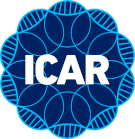Section 20: Methane measuring methods
Several factors influence the choice of measurement method such as cost, level of accuracy, precision, scope of application, and scale, which vary across disciplines (Cassandro et al., 2013; Hammond et al., 2016A; Garnsworthy et al., 2019). For instance, genetic selection programs require CH4 measurements on thousands of related individuals under the environmental conditions in which the animals are expected to perform (Falconer and Mackay, 1996). This can be challenging because dairy cattle perform in a wide range of conditions (e.g. grazing vs indoor housing). There are a number of different measurement methods currently being employed, each with advantages and disadvantages in terms of the factors listed above. The currently accepted and widely used measurement methods are listed and described below. The main features of methods for measuring CH4 output by individual animals are summarised in Table 4. Values for each feature are based on experience of experts in METHAGENE WG2 who have used the methods. All values are relative, and somewhat subjective, because absolute values will depend on installation and implementation of each method at different research centres. It should be noted that the measuring methods can be divided in two major sections: methods that measure the concentration and flux of CH4 (e.g. the respiration chamber), and methods that measure the flux of CH4 through the device (e.g. GreenFeed). This affects the useability of the methods for answering research questions – please see also the recommendations at the end of these guidelines.
